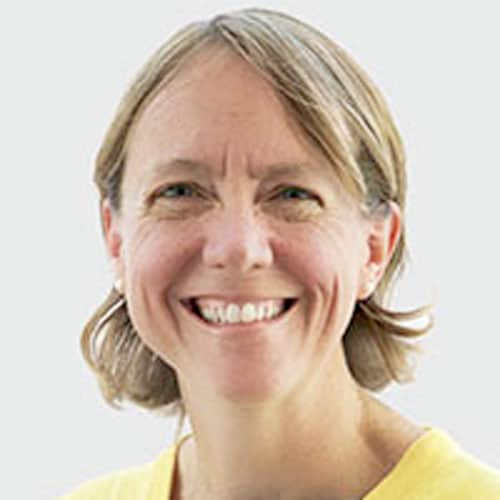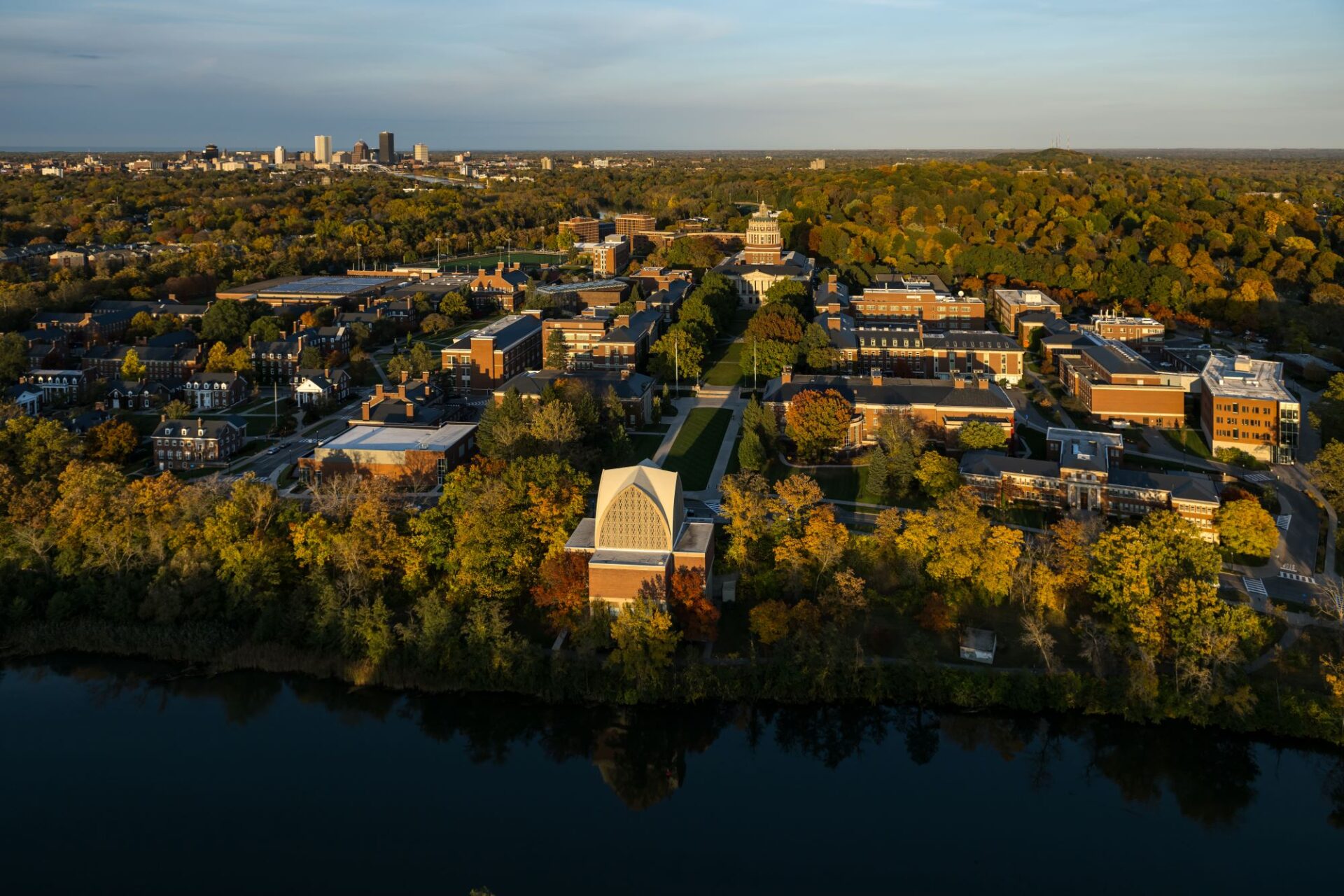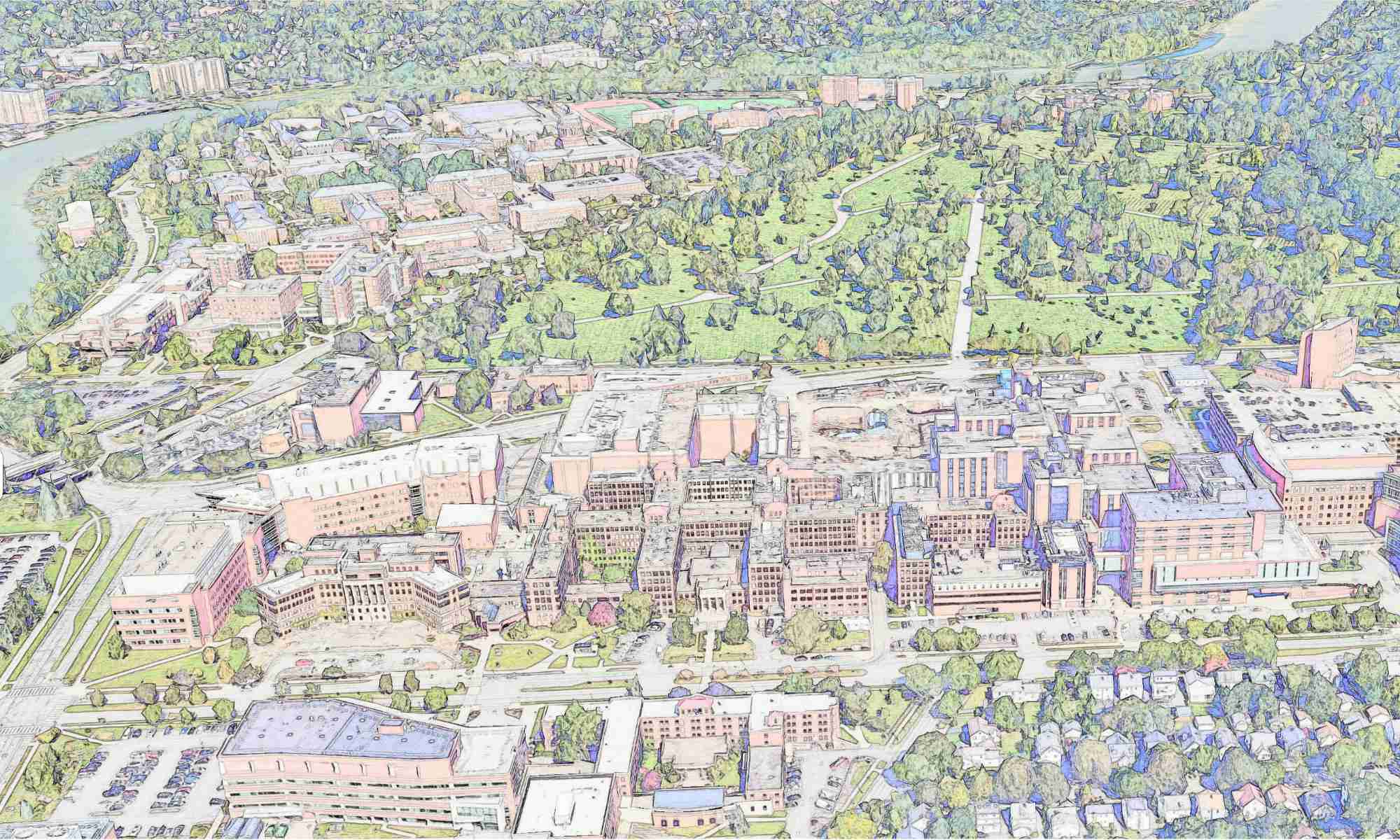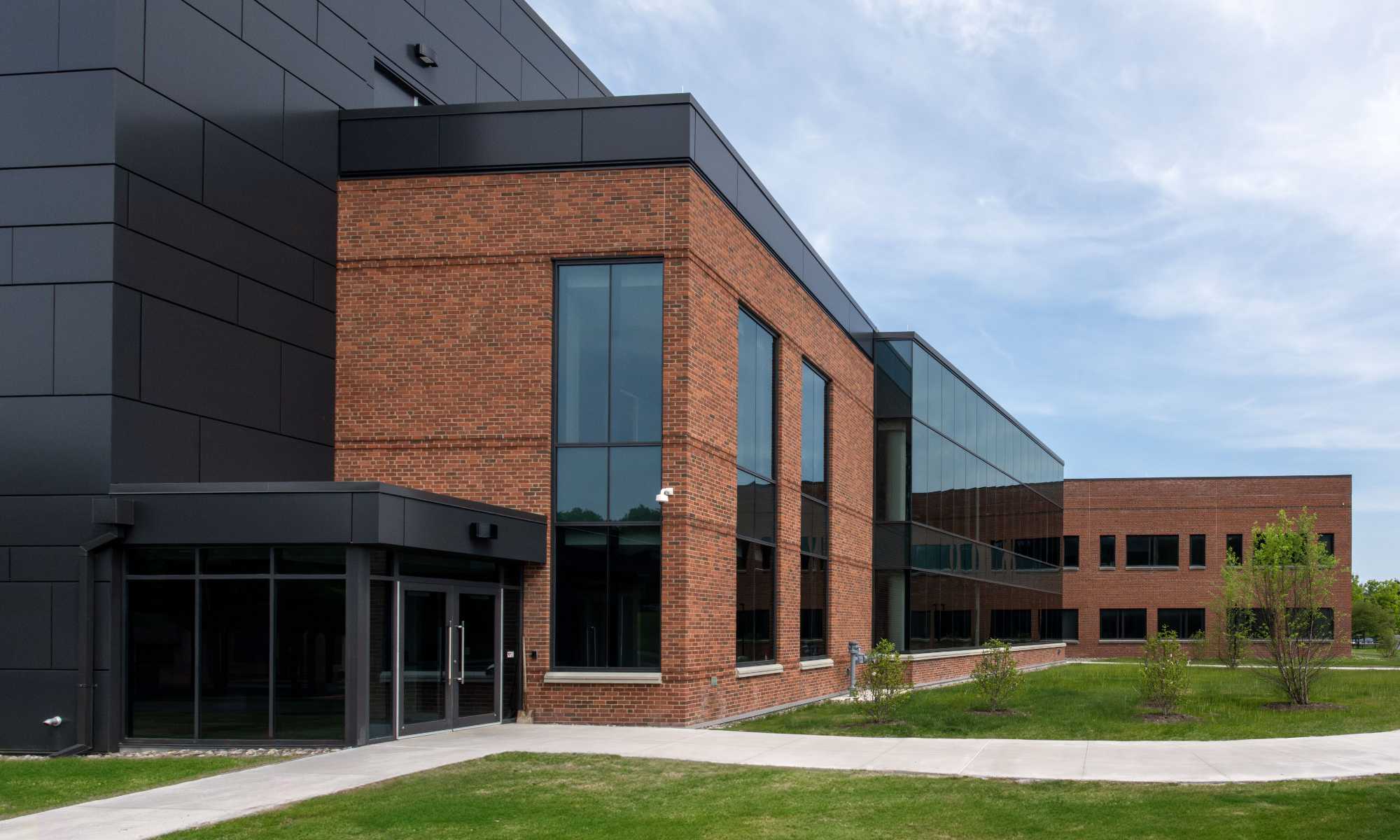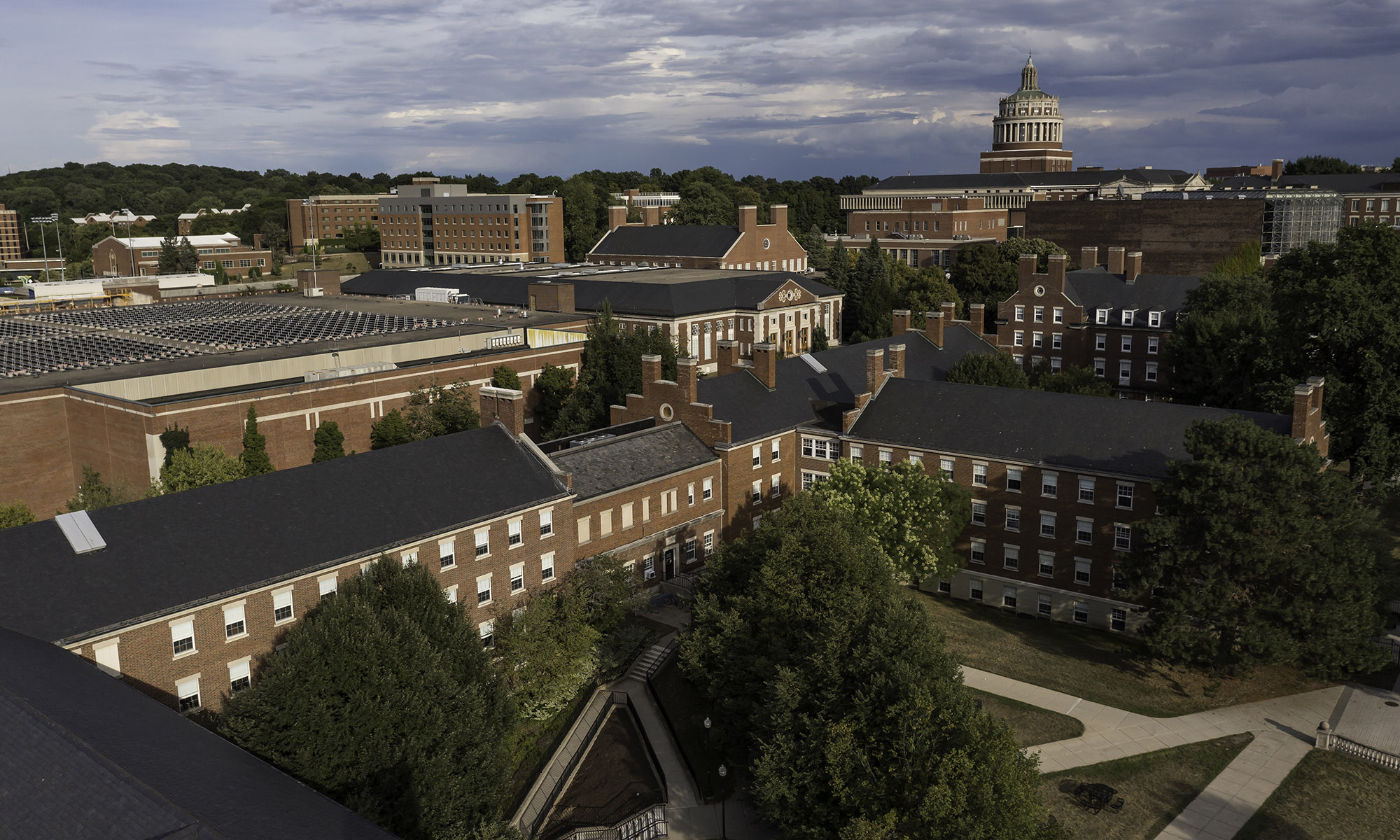The donor-funded projects alleviate the space constraints of the Interfaith Chapel.
The University of Rochester is planning for several River Campus building projects focused on enhancing the student experience.
Addressing the space constraints of the Interfaith Chapel is one goal for these projects. Built in 1970 and initially designed to accommodate three religions of the approximately 4,000 undergraduate students at the time, the Interfaith Chapel has operationally expanded its services over the years to embrace and serve the needs of an increasingly larger and globally diverse student population. Demand for physical space in the chapel has outgrown capacity as students of all faiths continue to seek more opportunities for social and spiritual growth and connection.
“Today’s student population is quite different from the student population of the 1970s when the Interfaith Chapel was built,” says Vice President for Student Life John Blackshear. “Not only do we have more students, but we also have more than 13 religious-affiliated student groups operating on the River Campus. All of these groups want and deserve to use the sacred and sanctuary spaces in the chapel, which we’ve simply outgrown.”
Adds Blackshear, “Spiritual life is an essential part of the college experience for many students. The University has always recognized the benefits of a robust interfaith community, and while we’ve done what we can to modernize and renovate the Interfaith Chapel, our students continue to need more space to flourish. Through the philanthropic efforts of University alumni and friends, we now see a path forward.”
Work has been ongoing at the chapel, with some of the completed updates including technology upgrades, accessibility improvements, and a renovation of both the Brennan Room and Conference Room, which are used as meeting spaces for students. Additionally, combination bottle-filling/drinking fountains are now on each level, single-stall restrooms were converted to all-gender facilities, new swipe-access doors installed, and an Ablution Station added.
Joseph P. Mack Catholic Center
The first new project set to begin construction is the Joseph P. Mack Catholic Center. Joseph Mack ’55, a trustee emeritus of the University, is a lead donor to the project. Since 2017, a group of volunteer alumni and the Catholic Newman Community have been raising funds to support the construction and operations of a new building. With fundraising now complete, construction will begin later this fall.
While the Mack Center will be the new home for Catholic Newman Community activities at the University, the facility will feature gathering spaces for use by all students. The 8,000-square-foot building will be located at Wilson Boulevard and Faculty Road and will have a chapel, pastoral care office, multipurpose room, kitchen, and student meeting space. The final design and orientation of the building addresses numerous factors, including preserving as much as possible the current lawn space.
There are currently more than 800 Newman affiliates on college campuses in the United States, according to the Newman Ministry.
Additional planning for new spaces
With housing, health and wellness, spiritual and cultural identity, and recreation all being mentioned in recent student suveys and focus groups, the University is in the planning phases for additional River Campus projects to address these needs, all aligned with the University’s Boundless Possibility strategic plan and campus master plan.
Plans are in development for a new facility to house the Greenbaum Center for Jewish Life. Similar to the Mack Center, the Greenbaum Center is being developed and operated exclusively through donor funds and will offset the space limitations at the Interfaith Chapel. In 2018, alumnus David Greenbaum ’73 and his wife, Laureine, pledged $2.5 million to establish the Greenbaum Center as the new home for activities by Hillel at the University of Rochester, and to be a resource for all students. Fundraising for this project is ongoing.
The University has also completed an extensive analysis of its housing infrastructure, covering 2.3 million square feet across 32 buildings. The study included interviews with students, faculty, and staff from across the University.
“The full analysis, which identifies critical areas for improvement, strategic recommendations, and an investment strategy, has been linked into our master plan initiative,” says Senior Associate Vice President for Facilities and Services Michael Chihoski. “When the plan is completed in the coming months, it will provide a roadmap for modernizing existing housing and adding new housing options.”
Recreation and athletic space needs also are being assessed through the master plan initiative. The University’s strategic plan calls for continued enhancements to the student experience, of which recreation and athletics are a critical component. The master plan initiative includes a study of the aggregate and location of these spaces across the University’s campuses.
“All of these new building initiatives, align with the spirit of enhancing the student experience,” Blackshear says. “By investing in these spaces, we’re not just improving our physical campus, we’re also investing in the holistic development of our students, fostering a sense of community, and creating an environment where every student can thrive spiritually, academically, and socially. We will plan with great intention to keep at the core of these plans our commitment to inclusive excellence.”

